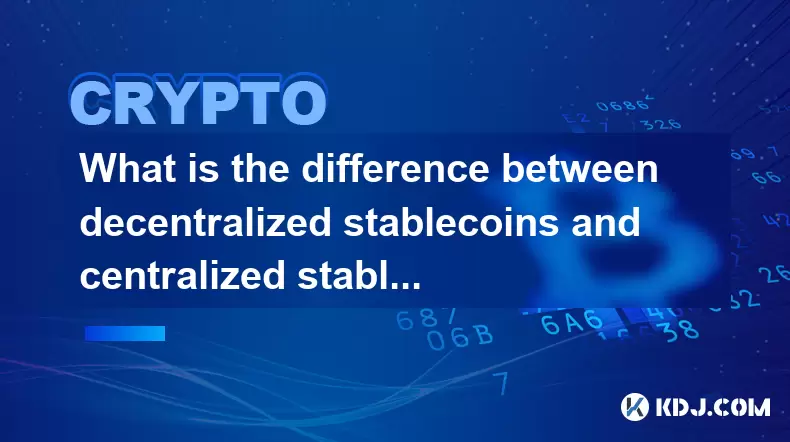-
 Bitcoin
Bitcoin $117800
0.49% -
 Ethereum
Ethereum $4432
0.55% -
 XRP
XRP $3.106
1.07% -
 Tether USDt
Tether USDt $1.001
0.01% -
 BNB
BNB $835.8
1.74% -
 Solana
Solana $189.1
2.72% -
 USDC
USDC $0.9999
-0.01% -
 Dogecoin
Dogecoin $0.2302
3.65% -
 TRON
TRON $0.3485
-0.69% -
 Cardano
Cardano $0.9212
-0.91% -
 Hyperliquid
Hyperliquid $46.97
1.45% -
 Chainlink
Chainlink $22.77
5.61% -
 Stellar
Stellar $0.4284
0.82% -
 Sui
Sui $3.766
2.82% -
 Bitcoin Cash
Bitcoin Cash $583.5
-0.82% -
 Ethena USDe
Ethena USDe $1.001
0.03% -
 Hedera
Hedera $0.2512
2.78% -
 Avalanche
Avalanche $24.18
2.27% -
 Litecoin
Litecoin $120.2
2.10% -
 Toncoin
Toncoin $3.450
1.96% -
 UNUS SED LEO
UNUS SED LEO $9.412
-0.92% -
 Shiba Inu
Shiba Inu $0.00001298
2.35% -
 Uniswap
Uniswap $10.99
3.75% -
 Polkadot
Polkadot $3.962
3.09% -
 Dai
Dai $1.000
0.00% -
 Bitget Token
Bitget Token $4.643
1.38% -
 Cronos
Cronos $0.1511
-0.08% -
 Ethena
Ethena $0.7246
3.18% -
 Monero
Monero $254.9
7.90% -
 Pepe
Pepe $0.00001100
3.32%
What is the difference between stablecoins and fiat currencies? What are the advantages?
Stablecoins offer reduced volatility and faster, cheaper transactions, while fiat currencies provide widespread acceptance and government backing, each serving unique financial needs.
May 15, 2025 at 09:28 pm

Stablecoins and fiat currencies are both forms of money, but they have distinct differences and unique advantages within the cryptocurrency ecosystem. Understanding these differences and advantages can help users make informed decisions about which to use in various financial scenarios.
What are Stablecoins?
Stablecoins are cryptocurrencies designed to minimize the volatility typically associated with other digital currencies like Bitcoin and Ethereum. They achieve this stability by pegging their value to a more stable asset, such as a fiat currency or a commodity like gold. Common types of stablecoins include:
- Fiat-collateralized stablecoins: These are backed by reserves of a fiat currency, such as the US Dollar. Examples include Tether (USDT) and USD Coin (USDC).
- Crypto-collateralized stablecoins: These are backed by other cryptocurrencies held in reserve. An example is DAI, which is backed by Ethereum.
- Algorithmic stablecoins: These maintain their peg through algorithms that control the supply of the stablecoin. An example is TerraUSD (UST).
What are Fiat Currencies?
Fiat currencies are traditional government-issued currencies that are not backed by a physical commodity but by the issuing government's guarantee. Examples include the US Dollar (USD), Euro (EUR), and Japanese Yen (JPY). These currencies are widely used for everyday transactions and are regulated by central banks.
Key Differences Between Stablecoins and Fiat Currencies
The primary difference between stablecoins and fiat currencies lies in their issuance and regulation. Fiat currencies are issued and regulated by central banks, while stablecoins are issued by private entities and can be regulated differently depending on the jurisdiction.
Another significant difference is the medium of exchange. Stablecoins operate on blockchain technology, making them digital and decentralized. In contrast, fiat currencies are primarily physical or digital but centralized, managed through traditional banking systems.
Transparency is another key difference. Many stablecoins provide public audits and proof of reserves, allowing users to verify the backing assets. Fiat currencies, however, rely on the trust and credibility of the issuing government and central bank.
Advantages of Stablecoins
Stablecoins offer several advantages over traditional fiat currencies, particularly within the cryptocurrency ecosystem:
Reduced Volatility: By pegging their value to stable assets, stablecoins provide a more predictable value compared to other cryptocurrencies. This makes them ideal for transactions and as a store of value within the crypto space.
Faster and Cheaper Transactions: Stablecoins can be transferred quickly and at lower costs compared to traditional banking systems. For example, sending USDT across borders can be done almost instantly and with minimal fees.
Accessibility: Stablecoins can be accessed by anyone with an internet connection, making them more inclusive than traditional banking systems, which may require physical presence or extensive documentation.
Integration with DeFi: Stablecoins are integral to the decentralized finance (DeFi) ecosystem. They are used in lending, borrowing, and trading platforms, providing liquidity and stability to these markets.
Advantages of Fiat Currencies
Despite the rise of stablecoins, fiat currencies still hold several advantages:
Widespread Acceptance: Fiat currencies are accepted globally for everyday transactions, making them highly practical for daily use. Stablecoins, while growing in acceptance, are not yet as universally accepted.
Government Backing: The value of fiat currencies is backed by the full faith and credit of the issuing government, providing a level of security and stability. Stablecoins, while backed by reserves, do not have this governmental guarantee.
Regulatory Framework: Fiat currencies operate within well-established regulatory frameworks, providing consumer protections and oversight. The regulatory environment for stablecoins is still evolving and can vary significantly by jurisdiction.
Physical Form: Fiat currencies can be used in physical form, which is still preferred by many for certain transactions. Stablecoins exist only in digital form, which can be a limitation in areas with limited internet access.
Use Cases of Stablecoins and Fiat Currencies
Stablecoins are particularly useful in the following scenarios:
- Cross-border Transactions: Stablecoins can be used to send money across borders quickly and at lower costs than traditional methods.
- Trading on Crypto Exchanges: Stablecoins provide a stable medium for trading other cryptocurrencies, reducing the risk of price fluctuations.
- DeFi Applications: Stablecoins are used in various DeFi applications, such as lending and borrowing platforms, to provide liquidity and stability.
Fiat currencies remain essential for:
- Everyday Transactions: Fiat currencies are used for daily purchases, from groceries to utilities, due to their widespread acceptance.
- Paying Taxes: Most governments require taxes to be paid in their national fiat currency.
- Salary Payments: The majority of employers pay salaries in fiat currencies, which employees then use for their daily needs.
Frequently Asked Questions
Q: Can stablecoins be converted to fiat currencies?
Yes, stablecoins can be converted to fiat currencies through various platforms, such as cryptocurrency exchanges. The process typically involves selling the stablecoin for the desired fiat currency, which can then be withdrawn to a bank account.
Q: Are stablecoins considered legal tender?
Stablecoins are not considered legal tender in most jurisdictions. Legal tender status is typically reserved for fiat currencies issued by governments. However, some countries are exploring the use of stablecoins in regulated environments.
Q: How do I choose between using a stablecoin and a fiat currency for a transaction?
The choice between using a stablecoin or a fiat currency depends on the specific needs of the transaction. If speed and low cost are priorities, especially for international transfers, a stablecoin might be preferable. For everyday transactions and where widespread acceptance is necessary, fiat currencies are more suitable.
Q: Can I hold both stablecoins and fiat currencies in my digital wallet?
Yes, many digital wallets support both stablecoins and fiat currencies. You can hold and manage both types of assets in the same wallet, depending on the wallet's capabilities and the jurisdictions in which it operates.
Disclaimer:info@kdj.com
The information provided is not trading advice. kdj.com does not assume any responsibility for any investments made based on the information provided in this article. Cryptocurrencies are highly volatile and it is highly recommended that you invest with caution after thorough research!
If you believe that the content used on this website infringes your copyright, please contact us immediately (info@kdj.com) and we will delete it promptly.
- Kazakhstan's Crypto Leap: Bitcoin ETF and Central Asia's Digital Finance Future
- 2025-08-13 12:45:19
- BlockDAG Presale Blazes Past $371M: Fundraising Frenzy Fuels Crypto Sensation
- 2025-08-13 13:05:21
- Meme Coins: Chasing the 2025 Surge – Which Will Moonshot?
- 2025-08-13 10:25:23
- Bitcoin's Wild Ride: Rally, Pullback, and What's Next
- 2025-08-13 10:25:23
- Bitcoin, Bitmax, and Institutional Demand: A New Era of Crypto Investment
- 2025-08-13 10:45:12
- Solana, ROAM, and Airdrops: What's the Buzz in 2025?
- 2025-08-13 11:35:13
Related knowledge

What is the difference between decentralized stablecoins and centralized stablecoins? Pros and cons comparison
Jun 15,2025 at 09:42am
What Are Stablecoins and Why Do They Matter?Stablecoins are a category of cryptocurrencies designed to maintain a stable value, usually pegged to an e...

What is the role of stablecoins in DeFi? Advantages and limitations analysis
Jun 14,2025 at 06:28am
Understanding Stablecoins in the DeFi EcosystemStablecoins play a pivotal role in the decentralized finance (DeFi) landscape by providing a bridge bet...

How do algorithmic stablecoins work? Potential risks and market impact
Jun 12,2025 at 02:07pm
Understanding Algorithmic StablecoinsAlgorithmic stablecoins are a type of cryptocurrency designed to maintain a stable value relative to a specific a...

How do stablecoins anchor legal currencies? Technical and economic model analysis
Jun 16,2025 at 08:43am
Understanding the Concept of StablecoinsStablecoins are a category of cryptocurrencies designed to maintain a stable value relative to a specific asse...

How do stablecoins maintain price stability? Principles and risk analysis
Jun 11,2025 at 12:01am
Understanding the Mechanisms Behind Stablecoin StabilityStablecoins are a category of cryptocurrencies designed to minimize price volatility, often pe...

What is the operating mechanism of stablecoins? In-depth exploration of its stability principle
Jun 10,2025 at 09:28pm
Understanding the Core Concept of StablecoinsStablecoins are a unique category within the cryptocurrency market, designed to address one of the most s...

What is the difference between decentralized stablecoins and centralized stablecoins? Pros and cons comparison
Jun 15,2025 at 09:42am
What Are Stablecoins and Why Do They Matter?Stablecoins are a category of cryptocurrencies designed to maintain a stable value, usually pegged to an e...

What is the role of stablecoins in DeFi? Advantages and limitations analysis
Jun 14,2025 at 06:28am
Understanding Stablecoins in the DeFi EcosystemStablecoins play a pivotal role in the decentralized finance (DeFi) landscape by providing a bridge bet...

How do algorithmic stablecoins work? Potential risks and market impact
Jun 12,2025 at 02:07pm
Understanding Algorithmic StablecoinsAlgorithmic stablecoins are a type of cryptocurrency designed to maintain a stable value relative to a specific a...

How do stablecoins anchor legal currencies? Technical and economic model analysis
Jun 16,2025 at 08:43am
Understanding the Concept of StablecoinsStablecoins are a category of cryptocurrencies designed to maintain a stable value relative to a specific asse...

How do stablecoins maintain price stability? Principles and risk analysis
Jun 11,2025 at 12:01am
Understanding the Mechanisms Behind Stablecoin StabilityStablecoins are a category of cryptocurrencies designed to minimize price volatility, often pe...

What is the operating mechanism of stablecoins? In-depth exploration of its stability principle
Jun 10,2025 at 09:28pm
Understanding the Core Concept of StablecoinsStablecoins are a unique category within the cryptocurrency market, designed to address one of the most s...
See all articles

























































































